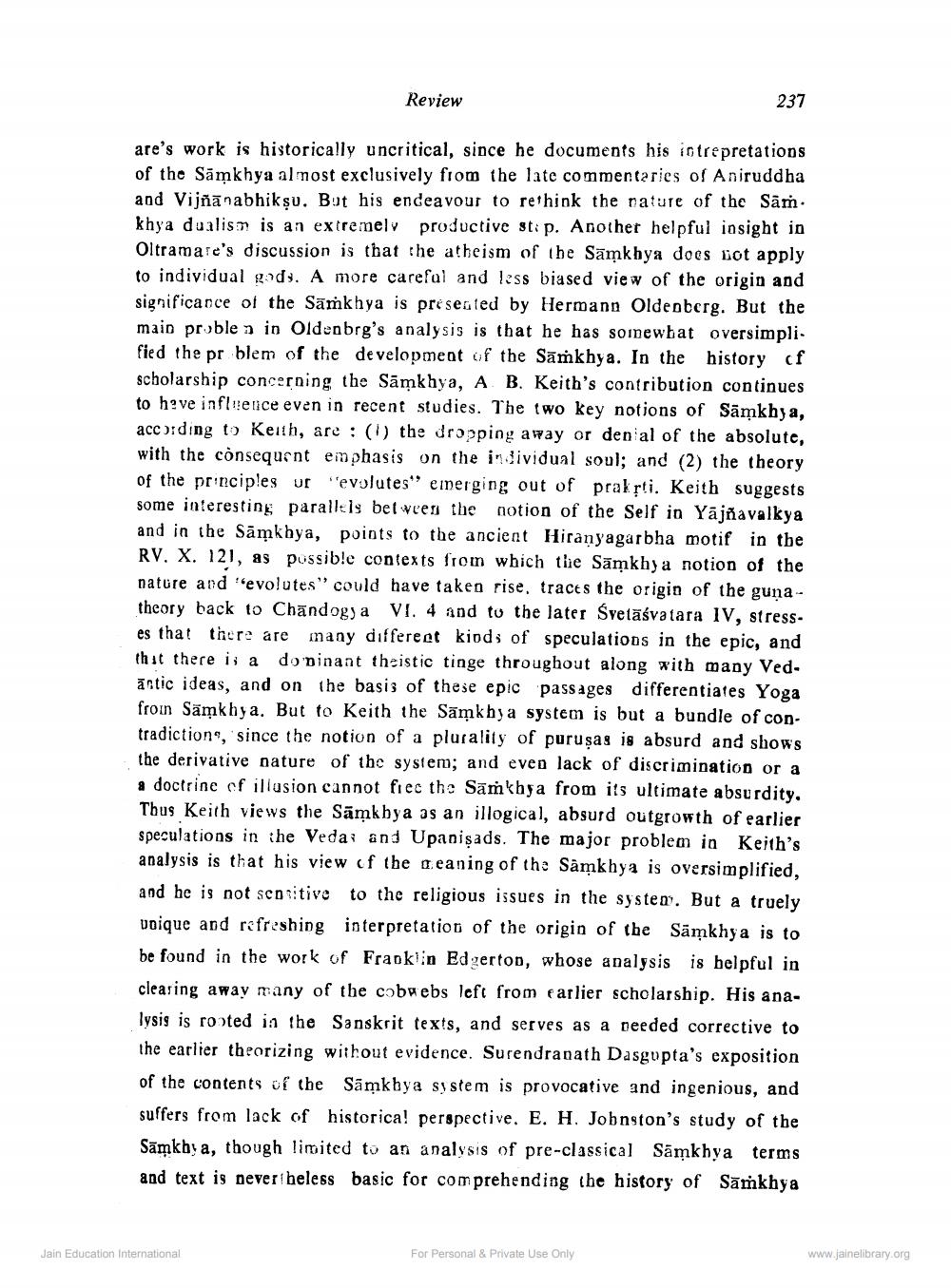________________
Review
237
are's work is historically uncritical, since he documents his intrepretations of the Sāmkhya almost exclusively from the late commentaries of Aniruddha and Vijñānabhikṣu. But his endeavour to rethink the nature of the Sām. khya dualis is an extremely productive stip. Another helpful insight in Oltramare's discussion is that the atheism of the Samkhya does not apply to individual gads. A more careful and less biased view of the origin and significance of the Samkhya is presented by Hermann Oldenberg. But the main proble o in Oldenbrg's analysis is that he has somewhat oversimpli. fied the pr blem of the development of the Sāṁkhya. In the history if scholarship concerning the Sāmkhya, A. B. Keith's contribution continues to hove influence even in recent studies. The two key notions of Sāmkhya, according to Keith, are : (1) the dropping away or denial of the absolute, with the consequent emphasis on the individual soul; and (2) the theory of the principles or evolutes" emerging out of prakrti. Keith suggests some interesting parallels between the notion of the Self in Yājňavalkya and in the Sāmkhya, points to the ancient Hiranyagarbha motif in the RV. X. 121, as possible contexts from which the Sāmkhya notion of the nature and evolutes" could have taken rise, traces the origin of the gunatheory back to Chāndogy a VI. 4 and to the later Svetāśvatara IV, stresses that there are many differeet kiods of speculations in the epic, and that there is a dominant theistic tinge throughout along with many Vedantic ideas, and on the basis of these epic passages differentiates Yoga from Samkhya. But to Keith the Sāmkhya system is but a bundle of contradictions, since the notion of a plurality of puruṣag is absurd and shows the derivative nature of the system; and even lack of discrimination or a a doctrine of illusion cannot fiec the Samkhya from its ultimate absurdity, Thus Keith views the Sāmkhya as an illogical, absurd outgrowth of earlier speculations in the Vedas and Upanişads. The major problem in Keith's analysis is that his view of the ceaning of the Samkhya is oversimplified, and he is not sensitive to the religious issues in the system. But a truely voique and refreshing interpretation of the origin of the Samkhya is to be found in the work of Fraoklin Edgerton, whose analysis is belpful in clearing away many of the cobwebs left from earlier scholarship. His analysis is rooted ia the Sanskrit texts, and serves as a needed corrective to the earlier theorizing without evidence. Surendranath Dasgupta's exposition of the contents of the Sāmkbya system is provocative and ingenious, and suffers from lack of historical perspective. E. H. Johnston's study of the Sāmkhya, though limited to an analysis of pre-classical Sāmkhya terms and text is never i heless basic for comprehending the history of Sāṁkhya
For Personal & Private Use Only
Jain Education International
www.jainelibrary.org




